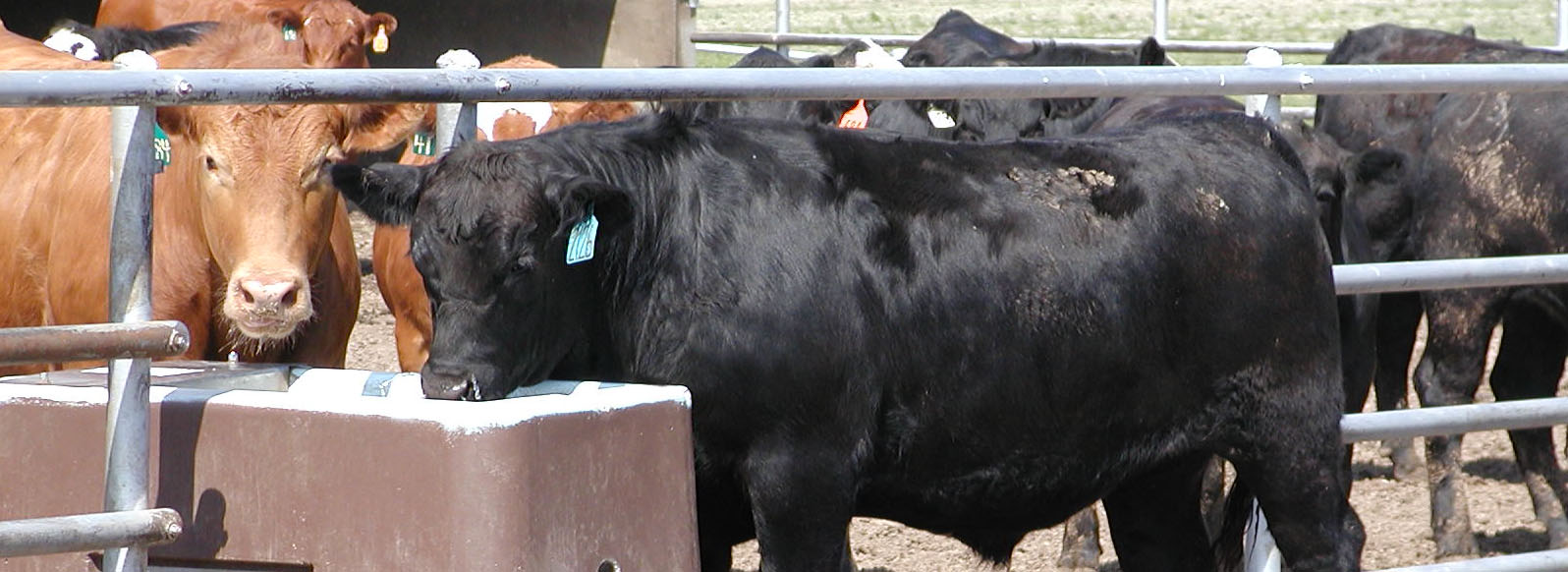Weather forecasters across the Great Plains have triple-digit temperatures slated for the last week of July. Heat waves of this nature often stress livestock housed outdoors by increasing their water requirements and consumption.
Kansas State University veterinary toxicologist Steve Ensley said the consequences of this added need for water can lead livestock to experience water deprivation and salt toxicity.
“On hot days, animals will hover around a watering device,” he said. “If there is only one in a pen or limited flow, and they cannot consume water for even two hours, water deprivation can become an issue.”
Water deprivation simultaneously occurs with another condition called salt toxicity, according to Ensley.
“As an animal dehydrates during a water deprivation event, their bodies will pull fluid out of their brain. At the same time, the sodium stored there gets trapped,” he said. “Their inability to disperse this sodium outside the brain creates toxic levels.”
Ensley recommends producers slowly provide livestock access to water after deprivation instead of an abrupt reintroduction, noting the process can be lengthy and labor intensive.
“Plug up a pen’s feed bunk, fill it with water and sort half the animals out of a pen. Allow them to drink for five minutes and then rotate the other half back in,” he said. “Do that every hour for 10-12 hours or until animals are not rushing to water.”
After drinking an excess amount of water, water-deprived livestock will quickly begin displaying the clinical signs and symptoms of salt toxicity. Ensley said allowing livestock unlimited access is the “last thing they should do.”
“Within 60 minutes of drinking too much, you can start to see brain swelling. They start to have seizures; they will collapse and will not be able to get up,” he said.
He added: “Some individuals get aggressive because of the damage to the neurons in the brain. With neuronal damage and swelling, there can be a rapid progression of the condition, leading ultimately to death.”
Preventing salt toxicity/water deprivation should start well before periods of dangerously high temperatures.
“I would advise producers to install a monitoring device on their water distribution systems before the days it gets over 100 degrees (Fahrenheit), so they can track if a pen is not getting water or an adequate amount,” Ensley said.
“In many confined animal situations, the pens at the end of the water distribution line are the animals most at risk because the water system cannot keep up with the demand when it is hot.”
Livestock that have recovered from salt toxicity/water deprivation may deal with long-term effects, but nothing that will stop them from entering the food chain.
“Due to the residual brain damage, they may go partially blind, but there are no food safety concerns or effects on a carcass after recovering from salt toxicity,” Ensley said.
“If they can function normally and get up to the bunk to eat and drink, producers should allow them to finish the feeding period.”



